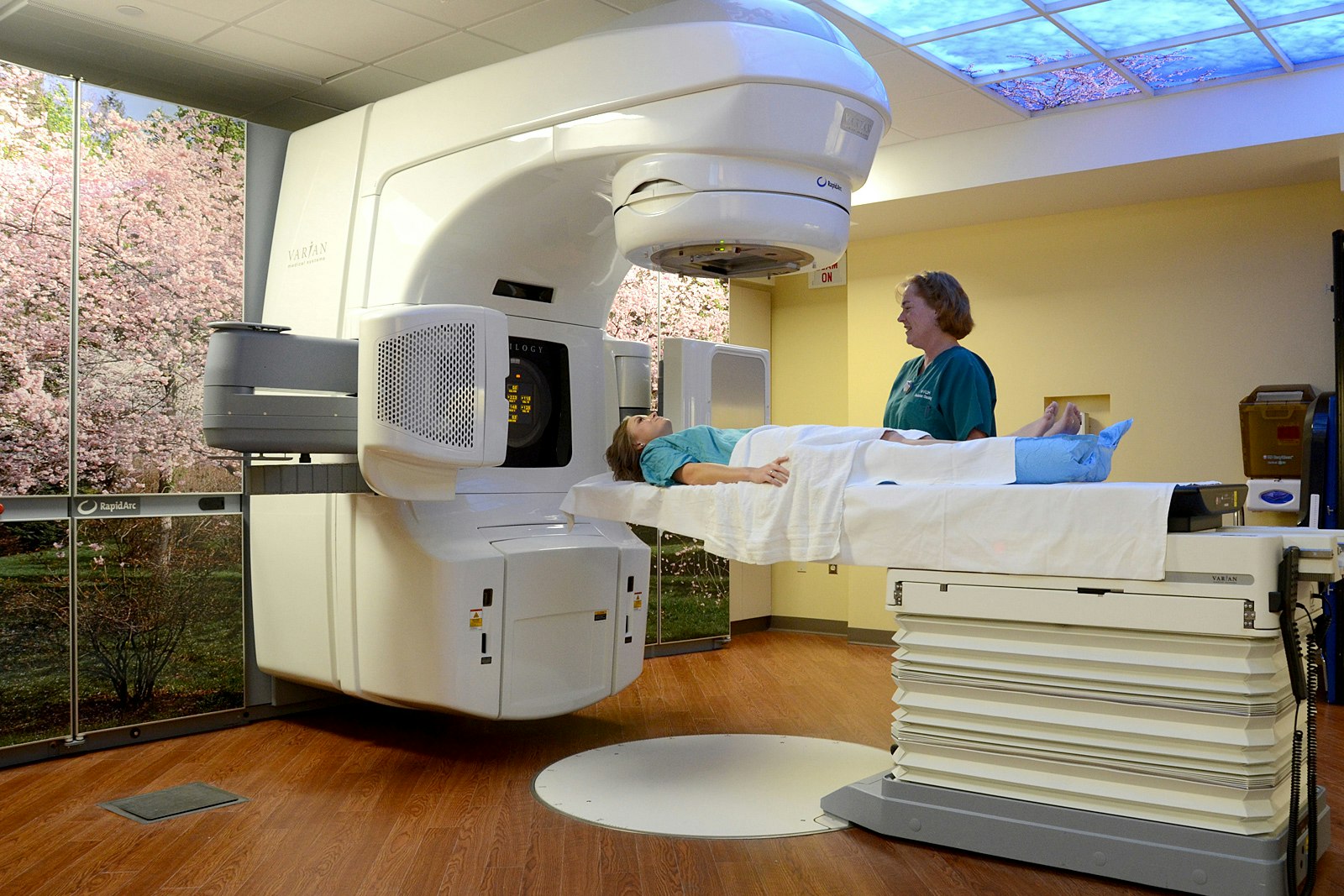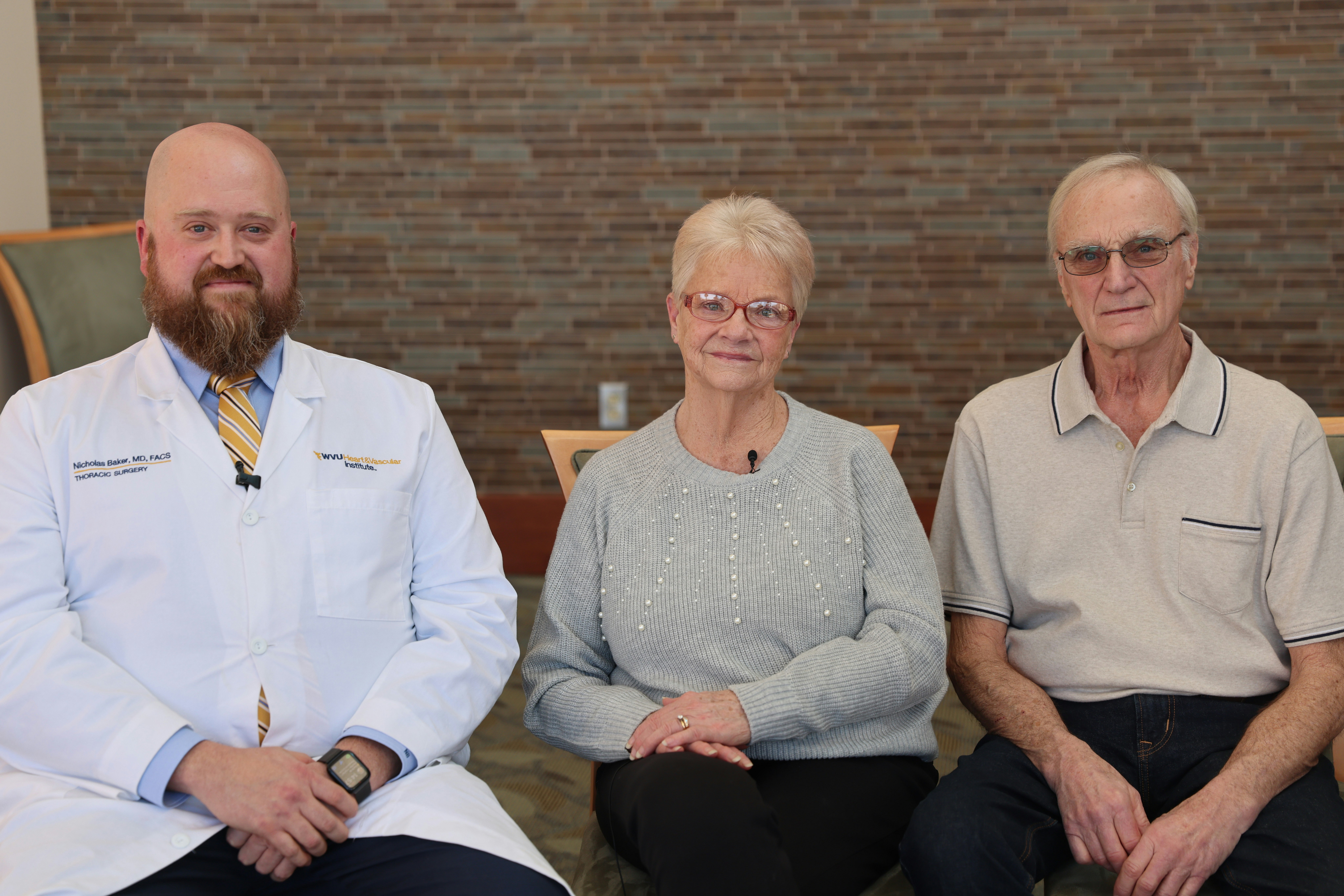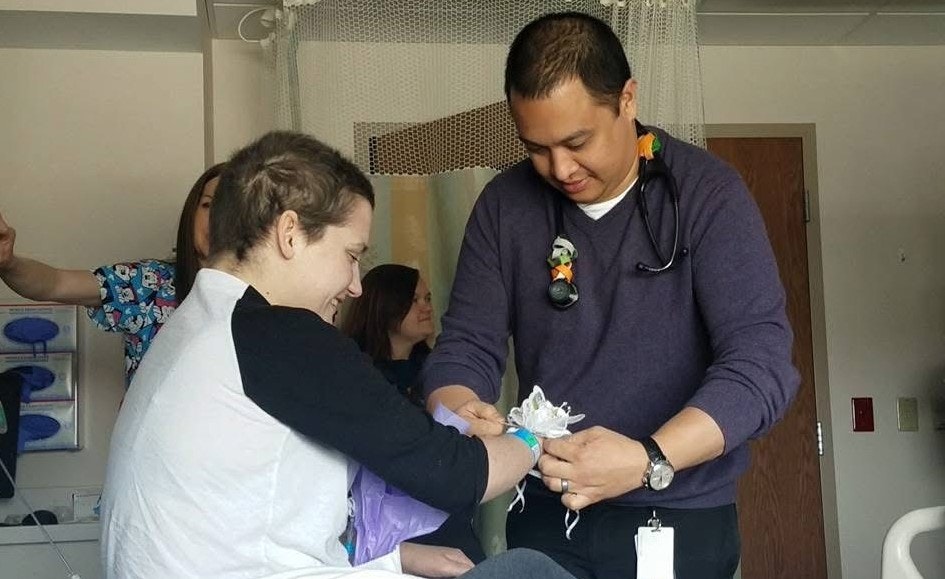The skin is the body’s largest organ, and being exposed to the sun every day puts it at risk for cancer. Skin cancer is the most common type of cancer and begins when abnormal cells in the skin grow out of control.
Our cancer specialists bring you the latest in diagnosing and treating all forms of skin cancer, including melanoma. Services and programs are provided in state-of-the-art facilities with a team that understands that cancer is physically and emotionally challenging. A cancer diagnosis is never easy to hear, but at the WVU Cancer Institute, you will have access to some of the nation’s best cancer care. It is where you will find hope, compassionate care, and the expertise you need to overcome cancer.
Types of Skin Cancer We Treat
The WVU Cancer Institute specializes in evaluating and treating cancerous, pre-cancerous and benign skin growths and conditions. Our comprehensive team brings together board-certified dermatologists, surgeons, medical oncologists, radiation oncologists, highly trained nurses, and pathologists —all with skin cancer expertise. We work to make sure your treatment is customized to your specific type of cancer and your needs.
Our team has expertise in melanoma and all other types of skin cancer, including:
Basal cell carcinoma
This type of cancer originates in the skin’s outer layer (epidermis) and often develops on the head, neck, nose, ears, or top of the hands, although. it can be found anywhere on the body. About 80 percent of skin cancer is basal cell carcinoma, which can occur because of sun damage or after other types of radiation exposure. Basal cell carcinoma usually does not spread to other parts of the body and grows slowly, although it can destroy surrounding tissues and structures in the process.
Melanoma
This type of skin cancer is less common than other types. However, it can be more aggressive and metastasize, or spreads to other parts of the body. Melanoma begins in pigment-containing cells called melanocytes that are present in the skin and to a lesser extent in tissues such as the eye, mouth and nervous system.
Merkel cell carcinoma
This is a rare form of skin cancer that is very aggressive and fast-growing, being notorious for metastasizing even when the original lesion is quite small. It is often found on the head and neck, and it is associated with both sun exposure and infection with a virus called Merkel Cell Polyomavirus.
Squamous cell carcinoma
Squamous cells are the flat cells that make up most of the top layer of skin, called the epidermis. Squamous cell carcinoma occurs from sun exposure as well as other triggers such as chronic inflammation and infection with several strains of Human Papillomavirus (HPV). It can be found on any part of the skin, as well as the respiratory and digestive tracts. Squamous cell carcinoma’s ability to metastasize is intermediate between that of basal cell carcinoma and melanoma.
Screening and Diagnosing Skin Cancers
There are different ways to diagnose skin cancers such as melanoma. It is important for you to talk with your doctor if you notice any new symptoms, such as a skin sore that doesn’t heal or an area of the skin that’s scaly, bleeding, raised, or reddish-brown.
We use the latest diagnostic tests to identify skin cancer and create a personalized plan for your care. These diagnostic tools include:
- Advanced imaging — With the latest technology, including chest x-ray, computed tomography (CT), magnetic resonance imaging (MRI), and positron emission tomography (PET) scans, we are able to detect signs of disease and see whether cancer has spread to other parts of the body, such as the lymph nodes.
- Physical exam — Doctors perform a physical exam to look for signs of changes in your body. These may include skin color changes, an enlarged organ, or palpable lumps that represent enlarged lymph nodes.
- Skin biopsy — Doctors use biopsies to sample abnormal tissue from your skin and examine its cells under a microscope. Biopsy results help oncologists plan the best treatment for you. There are several different biopsy types, including shave biopsy, which shaves off an abnormal-looking growth; punch biopsy, which uses an instrument called a punch to remove a circle of tissue from an abnormal growth; and incisional or excisional biopsy, which removes part or all of the growth using a scalpel.
- Skin exam — Doctors check the skin for bumps or spots that look abnormal in color, size, texture, or shape.
Treatment for Skin Cancers
From your first visit, our team works with you to address your specific condition and needs. Our goal is to treat cancer at its earliest stage. Your care plan may include:
- Cryosurgery — This type of treatment is also known cold therapy. It uses extremely cold temperatures to treat abnormal tissue and destroy tumors.
- Topical chemotherapy — This type of treatment uses a chemical cream to destroy cancer cells present in the top layer of skin.
- Electrosurgery — This treatment is also called electrodessication and curettage. It removes the tumor by scraping it off with a curette, which is a sharp, spoon-shaped tool. Doctors then use a needle-shaped electrode to cauterize the area and destroy the cancer cells.
- Simple excision — This type of treatment includes cutting the tumor off, along with some of the surrounding tissue.
- Immunotherapy such as CAR T-cell therapy — Your immune system has cells called T cells, which attack cancer cells. During this treatment, our doctors modify your T cells in a lab, which makes them able to bind and kill cancer cells. When your T cells are modified, they acquire special structures called chimeric antigen receptors (CARs).
- Medical oncology — Medical oncology includes chemotherapy, immunotherapy, targeted therapy, and hormone therapy. Our doctors use the latest in anti-cancer medicine to destroy cancer cells, slow cancer growth, and shrink tumors before surgery. Sometimes, we use medication alongside other treatments such as radiation or after surgery to destroy any cancer cells that might remain.
- Mohs micrographic surgery— One of the most advanced and effective treatments for skin cancer is Mohs surgery. According to the Skin Cancer Foundation, this procedure has the lowest recurrence rates, highest cure rates, and best cosmetic results of any treatment for the most common types of skin cancer.
- Photodynamic therapy — This treatment applies a light-sensitive medication that is absorbed into the cancer. Light is then shined onto the skin, activating the medicine and killing the cancer cells.
- Radiation oncology — We use radiotherapy treatments to target, destroy, and shrink cancer. The treatments produce precise, high-energy rays that target the exact area of cancer and spare healthy cells. Radiation oncology includes 3D conformal radiotherapy, image-guided radiation therapy, stereotactic radiation therapy, intensity-modulated radiation therapy, intraoperative radiation therapy (IORT), and brachytherapy.
- Surgery — Surgery helps us diagnose, stage, and treat many tumors. Surgical approaches such as laser surgery use the high-intensity light of a laser to precisely remove a cancerous or precancerous lesion.
- Targeted therapy — Our doctors put medicine and fluids through a catheter into your bloodstream. We use targeted therapy to treat cancers that have certain gene changes. For instance, in about half of melanomas, the BRAF gene is mutated in such a way as to produce a changed protein that can be specifically targeted. Targeted therapy interferes with the function of the abnormal cells without harming healthy tissue.
Resources for Skin Cancers
Cancer care goes beyond the medical diagnosis and treatment. Below you can find some resources that may help answer questions and connect you to others.





